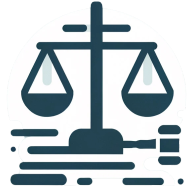How Can You Streamline Due Diligence in a Merger Or Acquisition?
Navigating the complexities of mergers and acquisitions requires precision and foresight, and due diligence is the critical element that can make or break a deal. This article distills hard-earned wisdom from industry veterans, providing actionable strategies and specialized tools to streamline the process. Expert insights offer a deep dive into how a methodical approach can significantly reduce risks and ensure a smooth transaction.
- Use AI-Powered Contract Analysis Tools
- Create a Tailored Due Diligence Checklist
- Implement a Centralized Virtual Data Room
- Standardize Industry-Specific Due Diligence Templates
- Utilize a Comprehensive Due Diligence Checklist
- Create a Well-Organized Virtual Data Room
- Centralize Information Early in the Process
- Create Standard Digital Checklists and Templates
Use AI-Powered Contract Analysis Tools
Using AI-powered contract analysis tools has been a game-changer for us. These tools scan documents for hidden liabilities, unusual clauses, and compliance issues quickly. They flag inconsistencies across agreements, allowing us to focus on strategic aspects. We then prioritize face-to-face discussions for clarifying high-risk areas identified by the software. This hybrid approach merges technology with expertise, optimizing due diligence workflows.
Create a Tailored Due Diligence Checklist
When it comes to streamlining due diligence during a merger or acquisition, one game-changer has been creating a tailored checklist for each deal. Instead of relying on generic templates, I work with the team to customize a due diligence list based on the industry, size of the deal, and specific risks involved.
We also use secure project management tools to centralize documents and track progress, ensuring everyone—lawyers, accountants, and other stakeholders—stays on the same page. It minimizes back-and-forth emails and keeps the process efficient. Having one person dedicated to overseeing the flow of information has also saved us countless hours by catching gaps or delays before they become bigger issues.
It's all about being proactive and organized from the start—because when the foundation is solid, the rest of the process is much smoother.

Implement a Centralized Virtual Data Room
We implemented a centralized virtual data room for real-time document collaboration. This eliminates version control issues and ensures transparency across all parties involved. Automated checklists within the platform track progress and flag missing documents instantly. Pre-set tagging systems categorize critical files for quick access during review. This process dramatically reduces delays and improves the efficiency of due diligence.

Standardize Industry-Specific Due Diligence Templates
We standardized due diligence templates tailored to the client's specific industry. These templates outline key risks and unique regulatory considerations for faster assessments. Cross-functional teams, including financial advisors and risk analysts, contribute to these tailored frameworks. Regularly updated templates reflect changes in law or market practices, keeping processes agile. This proactive approach reduces redundancies while maintaining thoroughness in evaluations.
Utilize a Comprehensive Due Diligence Checklist
I've found that implementing a comprehensive due diligence checklist significantly streamlines the process during mergers and acquisitions. This checklist serves as a structured guide, ensuring that all critical areas such as financial records, legal compliance, and operational efficiencies are thoroughly examined. By systematically addressing each component, potential risks are identified early, allowing for more informed decision-making and efficient negotiations. This approach not only enhances the thoroughness of the due diligence process but also contributes to a smoother transition and integration post-acquisition.

Create a Well-Organized Virtual Data Room
Creating a centralized, well-organized virtual data room (VDR) is a game-changer for streamlining due diligence. By categorizing documents clearly—financials, contracts, intellectual property, compliance records—we eliminate back-and-forth requests and make it easy for all parties to find what they need quickly. We've also implemented checklists to track progress and ensure nothing gets missed. For example, in one deal, this system cut review time by 30% because stakeholders could access up-to-date information in real time. Efficiency comes from preparation: structure the VDR with the end-user in mind and keep it regularly updated throughout the process.

Centralize Information Early in the Process
Organizing and centralizing information early is important in the due diligence process. For instance, setting up a secure virtual data room where all necessary documents, contracts, and records are uploaded and categorized. This ensures both parties have easy access to critical information, reducing back-and-forth delays. I've seen this approach applied in real estate acquisitions, where a client was purchasing a multi-property portfolio. Instead of chasing separate documents for each property, we worked with legal professionals to consolidate everything into a single, organized platform. This included titles, zoning permits, tenant agreements, and financial records, all reviewed in advance for completeness. The streamlined access meant we caught potential red flags early, like inconsistencies in lease terms, and resolved them before they became major issues. Clear communication and a structured process made the transaction smoother for everyone.

Create Standard Digital Checklists and Templates
One of the best ways to streamline due diligence in M&A is to create standard digital checklists and document request templates that can be customized for each deal. This involves creating a master checklist covering common areas like contracts, IP, employment, and financials and then tailoring it to the industry and the deal.
For example, if you are reviewing vendor contracts, you might use a template that flags key issues like changes in control provisions, termination rights, and assignment clauses. Using virtual data rooms with good indexing and search functionality helps to organize documents systematically and allows multiple people to review documents at the same time. This reduces duplication of work and identifies potential issues quicker than traditional methods.




